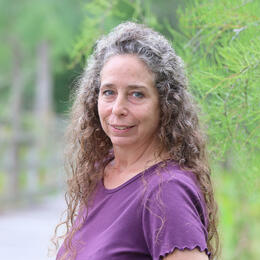Florida’s climate is changing. From heat waves and forest fires to drenching rains and sunny day flooding, Floridians everywhere—from the Panhandle to the Keys, from our inland counties to our coastal cities—are already facing climate impacts. One of the most significant threats is sea level rise, which leads to beach erosion, marsh inundation, and flooding in coastal communities. A living shoreline is an innovative, cost-effective solution to reducing erosion while restoring habitat.
A living shoreline, defined by NOAA as “a protected and stabilized shoreline that is made of natural materials such as plants, sand, or rock,” creates a living system that responds to mounting climate impacts (learn more about Audubon's living shoreline, for example, here). Across the state of Florida, the Shuck & Share program uses recycled oyster shells to create living shorelines through a community-based effort that will also improve resilience now and into the future.
Created by the Marine Discovery Center and adopted by the Friends of Gamble Rogers State Park, Shuck & Share engages land managers and volunteers in restoration projects to abate flooding and erosion in targeted areas using oyster shells. The program recruits local restaurants to provide oyster shells, which are cleaned for six months by the elements, placed in mesh bags or cages called gabions, and deployed by volunteers associated with Florida State Parks and similar organizations around the region.
When properly placed, the oyster shells slow down wave action while providing a substrate upon which new oysters and other encrusting organisms can grow, creating the base of the living shoreline. The new substrate can even recruit mangrove seedlings and other plants to create new islands over time, creating new habitat for birds and other wildlife.
Since Shuck & Share was initiated by Friends of Gamble Rogers State Park in 2016, dozens of projects across northeast Florida have been completed or are underway, including at Gamble Rogers Memorial State Recreation Area at Flagler Beach, North Peninsula State Park, Washington Oaks Gardens State Park, Cape Canaveral National Seashore, Jacksonville Zoo, and the City of Fernandina Beach.
Oyster shells have been deployed in many of these restored marshes to protect the shoreline. Friends of Gamble Rogers State Park has created oyster shell bags for their own project use, and now are also supplying materials for projects from Flagler County northward, whereas Marine Discovery Center supplies projects elsewhere. A website created by the St. Johns River Water Management District provides more information about these projects.
In addition to aiding with flooding and erosion, the Shuck & Share program is providing another benefit to local communities: it prevents hundreds of thousands of pounds of oyster shells from entering landfills.
Friends of Gamble Rogers State Park volunteers have contributed 1,918 hours collecting nearly 241,000 pounds of oyster shells from local restaurants. In total, 5,636 bags of oyster shells have been used for living shoreline projects. Learn more about their program and how to get involved here.




